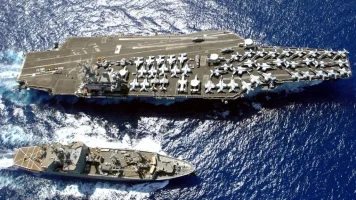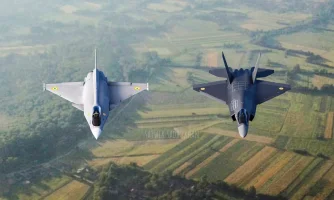- Views: 3K
- Replies: 21
India is taking significant strides to modernise its nuclear triad, the three-pronged capability to launch nuclear weapons from land, sea, and air that forms the bedrock of its strategic defence.
While the sea and land-based legs of this triad are being fortified with advanced submarines and missiles, the air component, managed by the Indian Air Force (IAF), faces a growing capability gap, raising concerns about its effectiveness in a high-threat environment.
The principle of a nuclear triad is to guarantee a nation's ability to retaliate against a nuclear attack, a concept known as a "credible second-strike capability."
This is central to India's "No First Use" policy, which pledges that India will only use nuclear weapons in response to a nuclear attack on its territory or forces. A robust and survivable triad ensures this deterrent is believable.
Sea and Land Legs: A Picture of Strength
The Indian Navy is on track to significantly enhance the sea-based arm of the triad with the development of the S5-class nuclear-powered ballistic missile submarines (SSBNs).These submarines, expected to displace around 13,500 tonnes, represent a major leap over the current Arihant-class vessels. The S5 submarines will be powered by a 190 MW pressurized light-water reactor and are designed to be exceptionally quiet, making them difficult to detect.
Crucially, they will carry long-range Submarine Launched Ballistic Missiles (SLBMs), such as the K-5 (5,000 km range) and the developmental K-6 (reportedly 8,000 km range), which are capable of carrying multiple warheads.
The extended range of these missiles will allow the submarines to patrol securely in the Indian Ocean while holding targets deep within adversary territory, ensuring a guaranteed retaliatory strike capability.
The first S5 submarine is expected to enter production by 2027 and join the fleet in the mid-2030s.
On land, the Strategic Forces Command has bolstered its capabilities with the deployment of the Agni-V intercontinental ballistic missile (ICBM). This solid-fuelled, road-mobile missile has a range of over 7,000 km.
In a major technological advancement, India successfully tested the Agni-V in March 2024 with Multiple Independently Targetable Re-entry Vehicle (MIRV) technology. This allows a single missile to carry several warheads, each capable of striking a different target, thereby overwhelming enemy missile defence systems.
Indian Air Force: A Gap in Aerial Deterrence
In sharp contrast, the air-based leg of the triad relies on fighter aircraft that were not designed for penetrating modern, sophisticated air defence networks.The IAF's nuclear delivery platforms include the French-made Rafale and Mirage-2000, the Russian Su-30 MKI, and the older Jaguar strike aircraft. While capable in their own right, none of these are stealth aircraft, meaning they have a large radar cross-section that makes them vulnerable to detection and interception.
Potential adversaries have deployed advanced surface-to-air missile systems like China's S-400 and HQ-9, and Pakistan's LY-80. These systems create multi-layered air defence bubbles that would be extremely hazardous for conventional fighters to penetrate.
To deliver a nuclear payload, these aircraft would have to rely on complex electronic warfare, flying at low levels, or using standoff cruise missiles like the 1,000-km range Nirbhay, which lack the reach and stealth of ballistic missiles.
The Compelling Case for a Stealth Bomber
Military analysts argue that a dedicated stealth bomber is essential to close this gap.Unlike fighter jets, a stealth bomber is specifically designed with a low-observable airframe, advanced avionics, and internal weapons bays to evade enemy radar. This would allow the IAF to conduct deep penetration strikes into heavily defended airspace with a higher probability of success.
A long-range stealth bomber, similar to the American B-21 Raider or the upcoming Chinese H-20, would offer several strategic advantages.
It could carry a significantly larger payload of conventional or nuclear weapons over intercontinental distances without refuelling. This provides strategic flexibility, allowing the aircraft to be used for signalling during a crisis, conventional strikes, or as a last-resort nuclear delivery platform, complementing the survivable sea-based deterrent.
The development of China’s own stealth bomber, the Xi'an H-20, adds urgency to the situation. The H-20 is projected to have a range of over 10,000 km and is expected to become operational within the next decade.
According to the Stockholm International Peace Research Institute (SIPRI), China's nuclear arsenal is also the fastest-growing in the world, projected to have increased its stockpile to 500 warheads in 2024, with Pakistan possessing around 170.
Without a comparable platform, India risks falling behind in the regional strategic balance.
While the cost of developing or acquiring a stealth bomber would be substantial, experts suggest that relying solely on missiles and submarines creates predictable dependencies.
A modernised air leg would introduce an element of unpredictability and ensure that India’s nuclear deterrent remains credible, flexible, and survivable from all three dimensions, thereby reinforcing its national security posture.


